Disguise body armor under ordinary clothes, keep drone detectors with you, and do not pick up downed FPV drones as trophies—these were the tips given by the participants in the first panel of the All-Ukrainian Security Conference of the National Union of Journalists of Ukraine (NUJU).
Journalists from the Zaporizhia, Donetsk, and Kharkiv Regions shared their experience working in conditions where the range of enemy drones increased from 10 to 30 kilometers. The risks for media workers have changed dramatically since the beginning of the full-scale war.
The main conclusion: a journalist’s survival depends not only on protective equipment, but also on understanding the new realities of warfare.
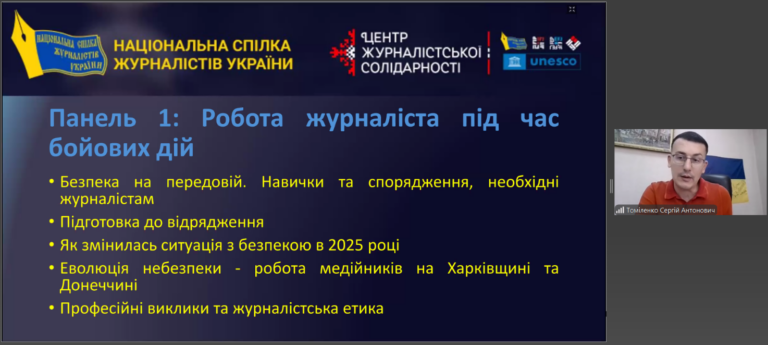
“We ran away from drones and hid in basements,” – a correspondent from Zaporizhzhia about working under FPV drones.

Anastasiya Potapenko has been working at Suspilne since the beginning of the full-scale war and, in two years, has come to feel how the work of journalists in frontline areas has changed dramatically.
Every day, Anastasiya travels to settlements a few kilometers from the line of contact to support the civilian population. But earlier, the main risks were artillery shelling; now, everything has changed.
“We came under drone attacks, we had to literally run away from them, hide in the remains of buildings, look for basements so that the drones would not detect us,” Anastasiya says.
FPV drones and fiber-optic drones have become especially dangerous. As a result, access to many settlements in the Zaporizhzhia Region was restricted for journalists due to security concerns.
The Suspilne film crew no longer travels to frontline areas without a drone detector.
“It will not protect us, but it allows us to understand how dangerous the situation is for our crew, and gives us time to orient ourselves,” explains the correspondent.
But the most unexpected advice was the recommendation to disguise bulletproof vests.
“The occupiers do not care whether we are journalists or military. They see a person in a bulletproof vest and consider him their target. Therefore, it is worth throwing a shirt over it,” says Anastasiya. “But, despite all the risks, she emphasizes the importance of continuing the work: Everyone is scared to go there. But everyone must understand why we are doing it.”
For the Suspilne.Zaporizhzhia team, the criterion for success has become a simple rule: “If our material can influence at least one person who watches or reads it, that is enough.”
Anastasiya emphasizes the golden rule of safety: life should come first. If the situation poses a great threat to life and health, it is better not to take risks.
But at the same time, she emphasizes:
“We cannot afford to neglect the circumstances that fate has given us. We must work in dangerous places and cover everything that happens there.”
Four turnstiles and the refusal of charity clothing: a military correspondent spoke about the evolution of preparation for the front.

Ivan Mahuriak from Channel 24 works alone – without a driver and cameraman. This forces him to plan each trip as a military operation.
When the front is constantly moving and cities become inaccessible in a matter of days, planning a trip becomes a difficult logistical task.
“We planned to shoot between Dobropillya and Belozersk. While we were negotiating, these cities became so close to the front that they suffered daily shelling,” Ivan shares his experience.
This situation forces you to adjust routes and destinations constantly. And when you work without your own team, logistics become doubly complicated – you have to rely on public transport and the military.
“At first, I made a significant mistake as I took clothes that were not as comfortable as those that were not a pity. It turned out that you shouldn’t spare money on yourself,” says Ivan.
Now he advises investing in quality equipment:
- military shoes instead of regular shoes – a must,
- clothing that protects all exposed parts of the body – situations are different,
- at least four turnstiles – calculated for each limb.
- We are used to having one turnstile and think “okay”. In fact, we need more of them, as the situations are really dangerous.
Ivan pays special attention to the moral and psychological component.
“You need to be prepared for what you can see and hear. The stories we have to watch can affect us emotionally, the journalist warns.”
He emphasizes the importance of taking care of our own mental health. He advises not to neglect not only physical danger, but also to take care of our psychological state.
“The best journalist is a living journalist,” Ivan quotes a phrase that has become his professional credo.
He calls on his colleagues to avoid unjustified risks.
“We must do the most that depends on us. Not to turn on some hero, but to work in such a way as to return from any trips. Much does not depend on us, but what depends on us – we must take into account,” the military correspondent concludes his vision of work in the most dangerous places in Ukraine.
“30 kilometers for FPV no longer surprises anyone,” a foreign media journalist on the new reality of the war.

Artem Lystopad works for Polish and Lithuanian television. In three years, he has seen how the range of enemy weapons has changed and new, unobvious threats have appeared.
When, in 2024, the checkpoint in Kupiyansk was hit from 10 kilometers away, it seemed incredible. Today, 30 kilometers for FPV drones is a common thing on many front lines.
“If earlier, getting to artillery positions was one of the easiest tasks, because the artillery is behind the forward units, today it is difficult to even get to the artillery due to enemy drone activity,” Artem states.
The range of FPV drones has increased threefold, radically expanding journalists’ ability to document the war. What used to seem like a safe rear can now become a battlefield.
Artem warns of a danger that few people know about – russian FPV drones are equipped with GPS trackers and explosives.
“These drones sometimes have a GPS tracker that can operate autonomously for the next six months. If a person picks up a downed drone and brings it to a dugout, the russians will track it and fly it there,” says the journalist.
Even a discharged drone battery can contain explosives, so Artem categorically advises against touching downed drones.
He draws particular attention to the growth of activity of russian sabotage and reconnaissance groups (DRG).
“DRG fighters can look like an old man loving vodka,” the journalist warned.
He talked about cases when saboteurs, disguised as local residents, collected information and then slaughtered people in basements.
“When in settlements, it is worth being careful about ‘local residents’, even when they seem innocent,” Artem Lystopad emphasized.
He also drew attention to the non-obvious threat – aggressive hungry dogs in frontline settlements.
“Locals often walk with axes to fight off these animals,” said the journalist.
He advises wearing protective clothing in case of a bite, ensuring the first aid kit includes medications for animal bites, and also wearing personal safety equipment (within the law).
The journalist emphasizes that it is imperative to carefully plan the route of the trip.
“There are no longer any checkpoints that will say: ‘Don’t go any further, because the front is there.’ They are knocked out and broken, there is no point in setting up a checkpoint under the russian FPV,” the journalist explains the new reality.
This means that journalists may unexpectedly find themselves on the front line, especially where GPS and mobile communications are not working well.
Comparing 2022 and 2025, Artem gives the following example:
“In 2022, we drove from the 93rd brigade to infantry positions 500-700 meters from the enemy. And a week ago, I worked in the same brigade – we unloaded a ground robotic complex so that the pilots could pick it up, because it became impossible to deliver provisions personally.
Despite all the difficulties, Artem remains an optimist.
“War is a very bad phenomenon, but if it already exists, then we, journalists, need to make the most of it. This is an invaluable experience, which, I hope, will never happen again on our lands,” emphasizes Artem Lystopad.
“Don’t take away the dignity of the military,” a journalist officer said on the ethics of covering war.

Bohdana Liaskivska from RBK Ukraine went from a TV journalist to an Armed Forces of Ukraine (AFU) reserve officer. Now she knows war from both sides and talks about the boundaries that cannot be crossed.
“Each of your materials is your responsibility for the life of everyone who remains in those positions,” Bohdana began, with this phrase, her story about journalistic ethics in war conditions.
She emphasizes that even one small tree in the frame can reveal the position and lead to the shelling of the dugout after the material is released. Therefore, the first step should always be a detailed discussion with the military – what can be shown and what is taboo.
“We even decided for ourselves in the newsroom not to just ask, but directly under the signature that you agree,” Bohdana tells about the professional credo of the newsroom.
The reason is simple – some people initially agree to show their faces, but then they start to doubt. Or it turns out that someone’s parents don’t know about their service in the war…
One of the most painful dilemmas is how to cover the stories of fallen heroes.
“We have a lot of heroic fighters who were killed, but we can’t tell about them. Why? Because their mother or father remains in the occupation,” explains Bohdana.
The issue of covering the stories of the wounded is especially acute.
“Many journalists want to make ‘cool’ shots – show a person screaming, or severed arms and legs. I am against such approaches. Don’t show the wounded’s faces – perhaps their relatives don’t know about the injuries yet. Don’t show intimate parts of their bodies – this is a humiliation of human dignity,” emphasizes the journalist.
When covering the aftermath of strikes on civilians, Bohdana advises always asking yourself: “Does this shot really have informative value, or is it just emotionally touching?”
“You took a photo of the act under the rubble with a bloody face. Parents, friends may not yet know about the tragedy. What a shock it will be for them?” warns the journalist.
According to Bohdana’s observations, Ukrainian media workers are more responsible than foreign ones. According to press officers, representatives of foreign media outlets want more sensationalism and lack the empathy and responsibility of Ukrainian media.
She emphasizes that a journalist must bear moral responsibility for everyone they film.
“And most importantly – leave dignity to the military, do not show footage that discredits him or can harm him,” concludes the journalist.
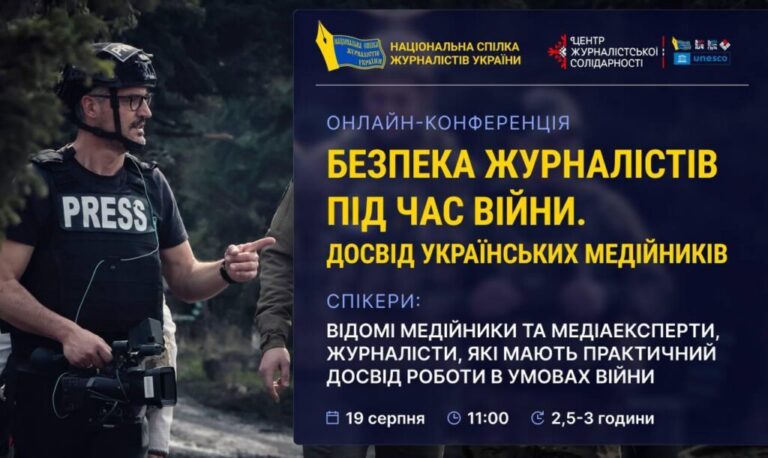
The online conference titled Safety of Journalists during War. Experience of Ukrainian Media Workers on August 19, 2025, was organized by the National Union of Journalists of Ukraine (NUJU) and the network of its Journalists’ Solidarity Centers (JSC). The event was attended by 80 media professionals from across Ukraine, and the Facebook broadcast enabled an even wider circle of colleagues to join.
Maksym Stepanov
NUJU Information Service

 THE NATIONAL UNION OF
JOURNALISTS OF UKRAINE
THE NATIONAL UNION OF
JOURNALISTS OF UKRAINE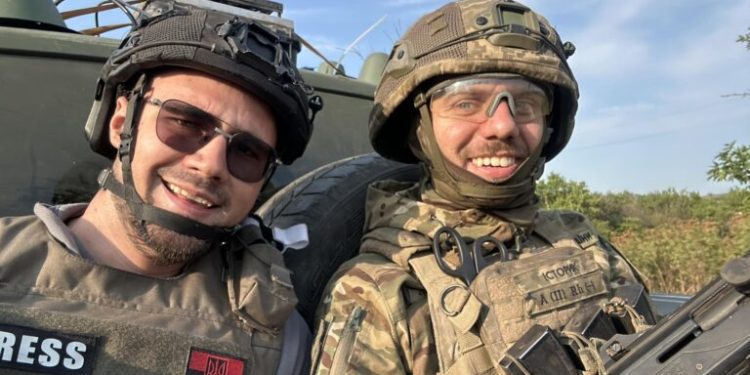

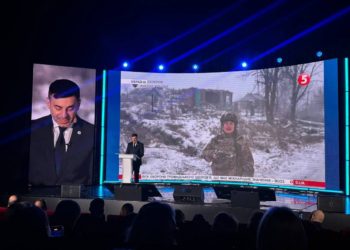
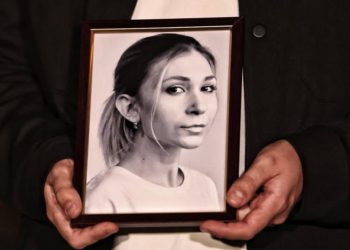
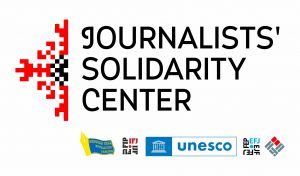
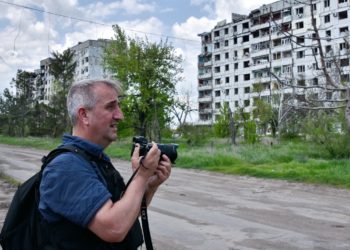






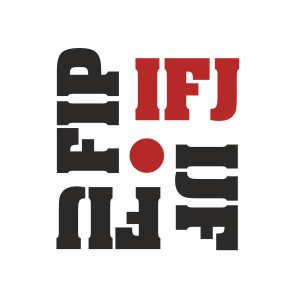




Discussion about this post